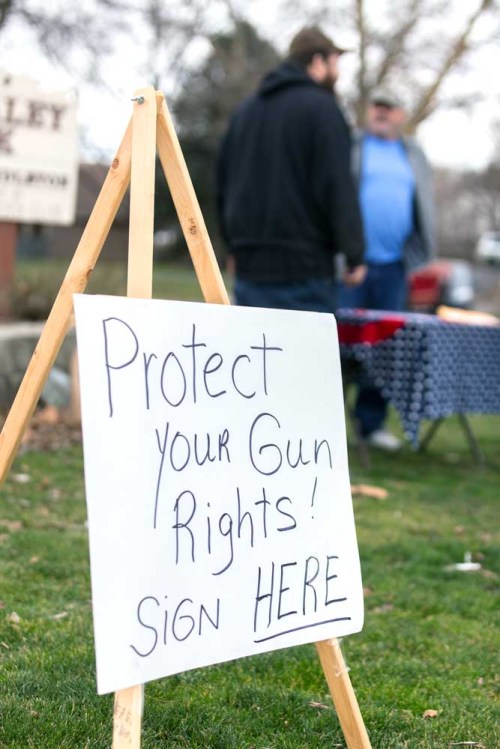Second Amendment ordinance on November ballot may have shaky legal standing
Published 6:00 am Tuesday, October 6, 2020

- Volunteers spent the morning at Roy Raley Park in Pendleton collecting signatures to make Umatilla County a Second Amendment sanctuary on Feb. 1, 2020.
UMATILLA COUNTY — Local voters have one countywide ballot measure to decide on this November — Measure 30-145, also known as the Second Amendment Sanctuary Ordinance.
But whatever fate the measure meets on Nov. 3, it’s unclear how the ordinance will prevent regulation of firearms for Umatilla County residents.
Umatilla County District Attorney Dan Primus has read the measure and said his office’s role will continue as usual regardless of the outcome.
“My understanding is we’ll continue to follow the laws of the state of Oregon,” he said. “When we take the position we do at the prosecutor’s office in Umatilla County, just as any other prosecutor in the state, we take an oath to uphold the law of the state of Oregon. So, we’re going to continue to do that.”
Umatilla County Sheriff Terry Rowan, who is running unopposed for another four-year term in November, said he read the measure “months ago” but wasn’t familiar enough with it to offer an opinion.
“It all comes down to how the document is worded, and will it withstand litigation,” he said. “That’s certainly always the challenge.”
Measures bearing similar language as Measure 140-35 and its intent are before voters in Clatsop, Columbia and Coos counties, while others were rejected from the ballot in other counties, such as Curry and Harney.
“This ordinance would prevent Umatilla County and its employees from devoting resources or participating in any way in the enforcement of any law or regulation that affected an individual’s right to bear arms, firearm accessories, or ammunition,” according to the Umatilla County voters’ pamphlet. “County officials could still comply with firearms laws that relate to convicted felons, could still participate in the enforcement of firearm crimes, and could still take any actions necessary to comply with court orders.”
Individuals who violate the ordinance would be subject to a $2,000 fine, the measure states, and “corporations” would be subject to a $4,000 fine. The measure includes exceptions for regulation of firearms for those convicted of felony crimes or the prosecution of crimes involving firearms, and allows for an individual’s “voluntary” participation in firearm regulation.
If it were to pass, the Second Amendment Sanctuary Ordinance may subvert Oregon law and could face legal challenges.
A revised state statute, ORS 166.170, explicitly gives the Oregon Legislature sole authority to regulate firearms in the state and voids any “county, city or other municipal” ordinance that conflicts with that authority without the support of a state statute.
Sheriffs in other counties where similar ordinances are up to the voters have weighed in, however, and expressed concern with the liabilities it may open their offices up to.
Rowan said he’s a supporter of the Second Amendment but didn’t know how the ordinance would impact his office’s law enforcement, if at all, except for the understanding that regulations regarding felons possessing firearms and policing crimes involving them would still be enforceable.
“We’ll just have to see how it all plays out,” Rowan said.
Umatilla County Counsel Doug Olsen didn’t return multiple requests for comment on the ordinance.
Regardless of what voters decide on Measure 30-145, Umatilla County already approved an ordinance to protect the right to bear arms in 2018 with 65% of the vote.
The Second Amendment Preservation Ordinance, which would not be altered or removed by the passage of the sanctuary ordinance, currently restricts the county from using resources to enforce state or federal laws that infringe on the constitutional right to keep and bear arms, while simultaneously granting the sheriff the authority to rule on the constitutionality of those laws.
In 2008, the U.S. Supreme Court ruled in District of Columbia v. Heller that the Second Amendment right to bear arms was not unlimited and could be regulated.






